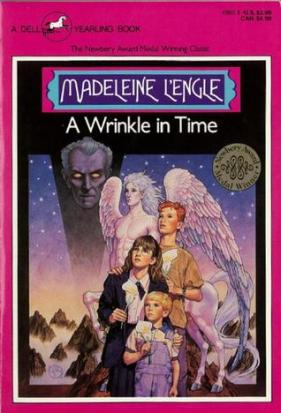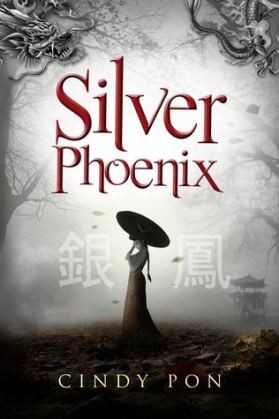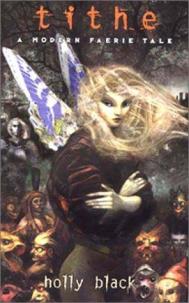Well, it’s certainly been a while since I’ve done anything but a straight review, hasn’t it? It’s been far longer since I’ve even touched on covers. Which is sad, because I really do love looking at covers and trying to figure out why the design choices that were made happened.
I wanted to look at an older novel this time, because while you can go into everything from what themes in the novel the designer was pulling on to what they shifted to make the novel more marketable in a more recent work, there’s one thing you can’t see the development of in a book that’s been out for under ten years. The way public tastes have shifted over the years, and the way a novel’s cover has adapted to new trends can easily be seen in something that’s been around for several decades, though.
You’d think I’d have done this before, since noticing those shifts was one of the first things that got me looking at covers. The oldest series I’ve looked at, though, has been Garth Nix’s Old Kingdom, and that only dates to the 90’s, with the only changes being very recent. It really doesn’t have the same feeling of generational shift that some other books do.
So let’s look at a novel that’s turning fifty-five this year, albeit with a few caveats. First, I’m only looking at A Wrinkle in Time, not the time quartet as a whole here. There really are an astounding amount of covers for this series, and all of us only want to be here so long.
Second, along a similar line, I really can’t hit every cover even this single book has ever had. I’m mostly going to be pulling out the ones that I’ve seen most often and the ones I find most interesting, though if I’ve missed a favorite of yours let me know.
And lastly, I’m going to try to break this up by era, but without access to individual books, it’s apparently impossible to get accurate dates on each design. I’m seeing covers I owned as a child listed with publication dates of 2016, and ones that I know I didn’t see until I was an adult listed under 1973. A lot of this is going to be guesswork and general “before my era/after my era.” Again, if I get anything glaringly wrong, let me know.
So, start from the oldest, I guess? Here are the three I’ve seen that I know are definitively before my time.
The first is the first edition from 1962, the second I would guess to be early 70’s between the art style and the $1.25 price point, and the last I think is probably late 70’s or early 80’s. It’s the copy of the book my older cousins had, at least, so that seems about the right time period. And even in this short span of time you can see how far tastes have already changed, as we go from “classic sci-fi” to “hippie flower child” to “prog rock van door.”
Looking back, I think the only one of these that I actually like is the first edition cover. It’s minimalist and timeless; it still looks like something that could be put on a shelf today without too much difference. In fact they pretty much did that for the 50th anniversary cover, and even then I like this original better. The new one has all of the characters standing straight and tall, which is nice but doesn’t fit; the body language on the silhouettes here screams confusion and distress, which is how the leads first react to travelling by tesseract.
It’s also the only one of the three that seems to fit the whole story for me. The sunshine and rainbows of the 70’s cover fits only a very small part of the story. And as much as the glowing red eyes of the 80’s cover intrigued me when I was six, I can’t say doom and gloom fits the entire novel either. And neither of them reflect that this story is far more sci-fi than fantasy. A group of children looking like they’ve just been shoved into something they’re not remotely ready for, while metaphorically teleporting is a pretty good description of the plot, though.
Not that the cover that is my era is much better than the latter two.

Oh the 90’s pastels.
This one gets major nostalgia points from me, as it’s the copy I owned as a child (and still do!) When I think of Meg and Charles Wallace, those are the faces I see. Aesthetically, though, it probably ranks below even the flying rainbow cover. Given, I think it does a better job of capturing the tone of the story than most of the other ones. There’s peace and wonder here, but also a looming threat.
A lot of the newer covers do a good job of capturing that tone as well. All of these post-date me, so they’re all 2000 or later. And even just looking at the art style you can see how much times have changed. The bright colors and realistic style are gone, in favor of more muted tones and heavy stylization.
These are probably my three favorite of the ones that post-date me. Between personal experience and research I’d guess 2005-present on all of them, though I couldn’t find any details on the middle one.
The first is sketchy, whimsical, and manages to cover enough ground in its little details that it feel like it represents the book as a whole. The middle cityscape covers a lot less, but the Art Deco style is beautiful enough that it makes up for it for me. Besides, in spite of depicting what has to be Camazotz, it doesn’t have the overwhelming feeling of horror that the 80’s cover above does; the shining city could be either utopic or dystopic easily.
The standout for me is the last cover done by the Dillons, but when it comes to their artwork that’s almost always the case for me. The children look a little awkward, but the witches and landscape in the background are perfect. And while everything’s ominous, again it’s not so overwhelming that it makes the novel look like it’s horror.
I know these three also post-date me, though I can’t give an exact point for the first. The second says “40th anniversary” on it, so about 2002, and I remember seeing the third in bookstores in late high school, so around 2004. I like them less than the three above, but thought they were interesting enough to point out. Most of the other covers I hadn’t seen before seem to stick to some stripe of “Mrs. Whatsit in centaur form,” but these go a different route.
I admit I find the comet tails cover interesting largely because it doesn’t appear to depict anything described in the novel. I’m not sure what they were actually thinking with it, aside from “generic fantasy.” And if I had to guess a date for it, I’d probably peg it as early 2000’s, too; it has the same feel that a lot of generic covers from that era have. It almost looks like a Lurlene McDaniel cover to me.
The other two are much better, though, looking both modern and unique. The middle, rainbow circles cover, depicting what I’m assuming to be kything, is probably my favorite. It calls back to the first edition cover, plays off an underused mechanic from the novels, and references the science fiction in the story in a way most of the covers don’t. And again, it looks very modern to me; this is one of the only covers I’ve seen that uses a photo instead of a drawing.
The last I probably find more unique than appealing. The art style is not my favorite, but I find it almost biblical or iconographical in a way. Which fits: religion has always been a major part of L’Engle’s worlds, in a way that I’ve never really seen come through before. It feels older than the other two, but I think it has its place.
What I like about putting all of these together, though, is that you can clearly see the shift in taste that’s happened over A Wrinkle in Time’s long publication history. It’s harder with the newer ones for me, but the older ones I can glance at and say “god, that’s so 70’s” easily. And I think as we move on, that will happen for the 2000’s era covers, too. And with that cultural shift in taste comes the fact that everyone who’s ever read this book takes away a slightly different view of it. Or, for an older person, maybe they see their view of it represented better.
So, do you have a favorite, or one that you thinks best represents the novel? Or did I miss one of yours? The question of what cover art connects the most to people is always so subjective, so I’m always interested to know what other people like best, and why.








































